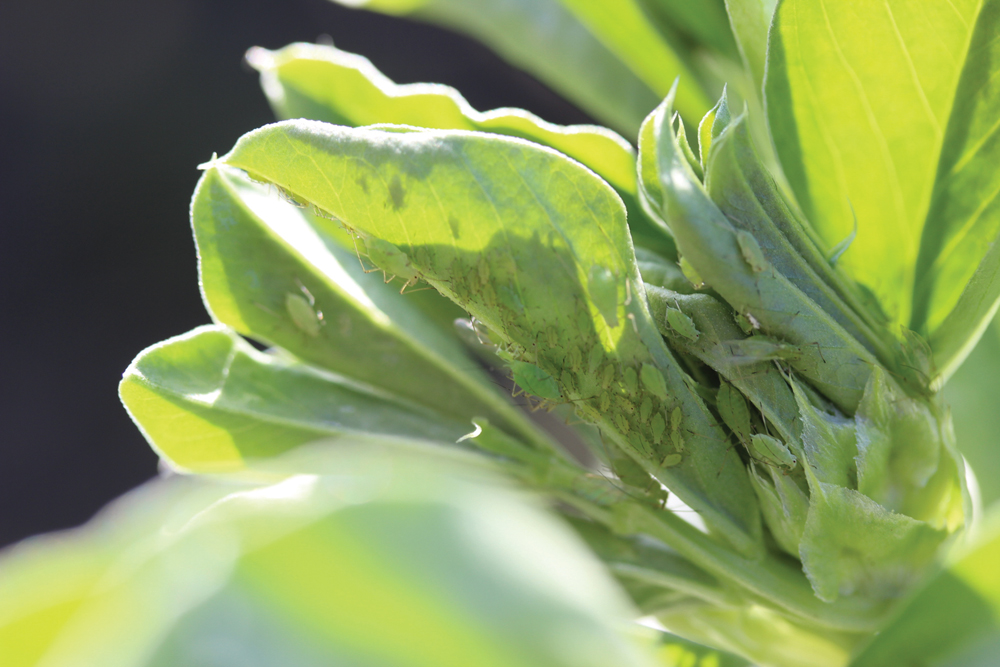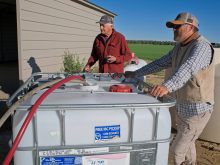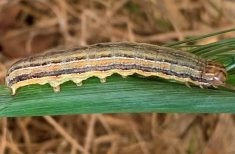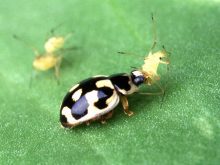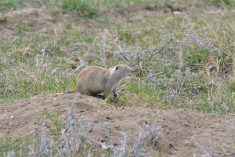The pea aphid may not look all that terrifying, but the tiny sap-sucking pest is capable of sending shivers down the spines of even the hardiest pulse farmers in some parts of the Prairies.
Pea aphids are so named because of their attraction to field pea plants but virtually any pulse crop, including lentils, faba beans, dry beans and chickpeas, and legumes such as clover and alfalfa can be a host. Scientifically known as Acyrthosiphon pisum, pea aphids basically suck the juice out of a plant’s leaves, stem or roots, which, in turn, can result in significantly lower yields due to reduced seed formation and smaller seed size.
“I like to say that pea aphids can suck the yield out of plants,” says Tyler Wist, a research scientist with Agriculture and Agri-Food Canada, who is based out of the Saskatoon Research and Development Centre. “For example, with (faba) beans the last few years, we’ve seen plants wilting under the stress aphids are causing. In 2018, here in Saskatoon, we had population counts of about 17,000 aphids on a single (faba) bean plant.”
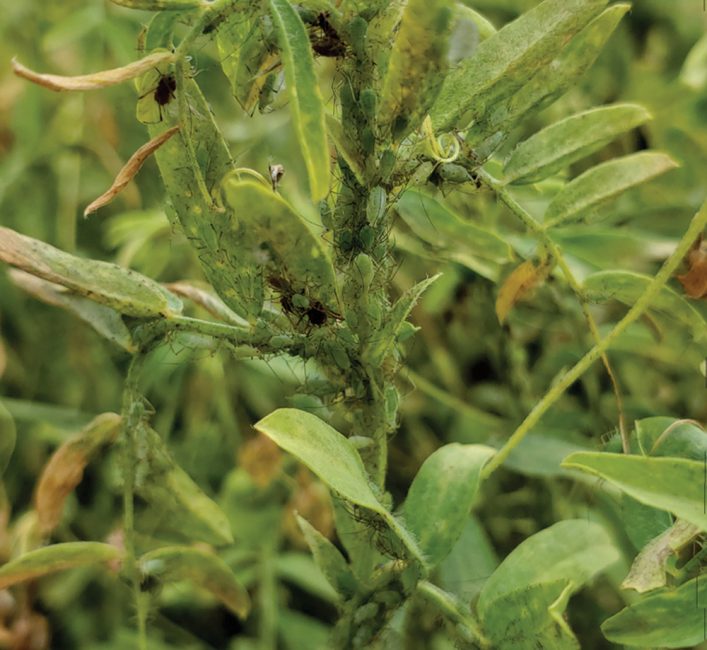
Pea aphids are sometimes referred to as a cosmopolitan pest because they have a presence on every continent and often migrate from one region to another. They were first reported in the United States in 1878 and were first found in Canada near the turn of the century in the Ottawa region.
Read Also
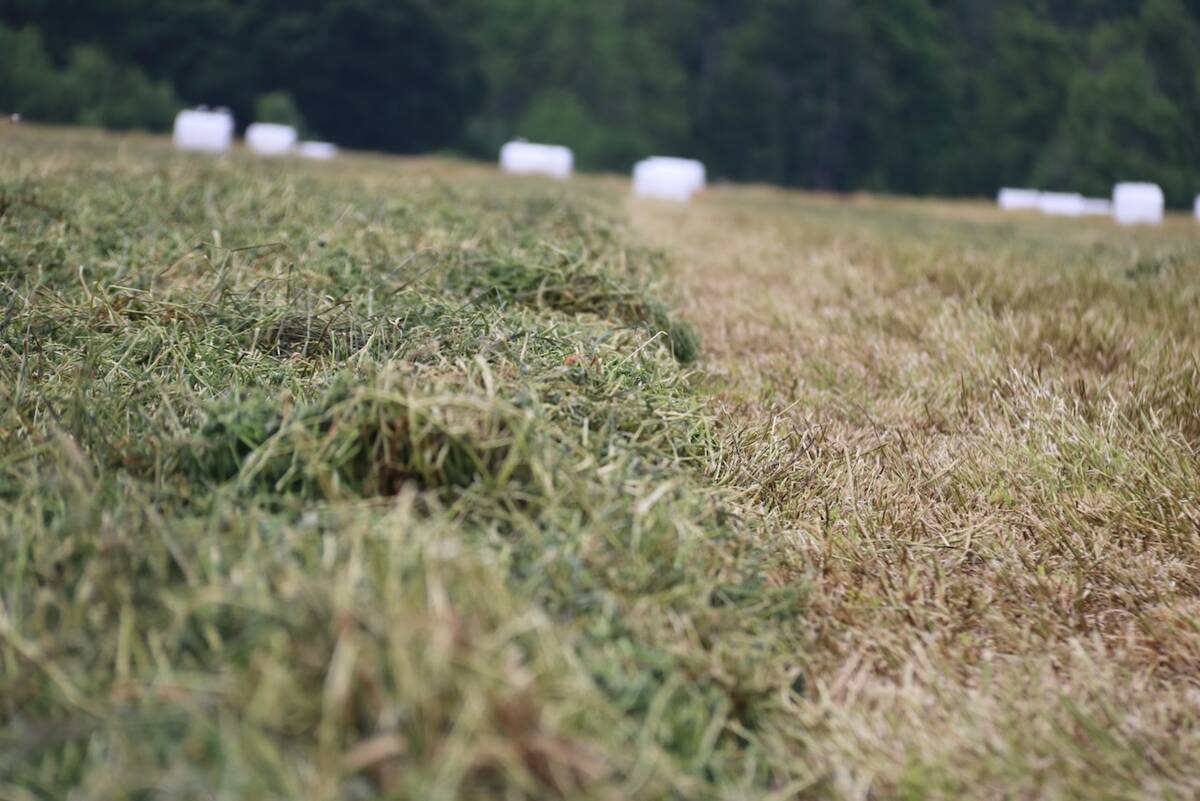
New high-performance forage training program to launch in 2026
A new Canadian Forage and Grasslands Asssociation high-performance forage program will be a resource for farmers, agronomists and others in the forage sector.
Wist says the pea aphid is in many ways a model organism. The sap it feeds on contains high levels of sugar but is poor in terms of other nutrients it contains. A gut microbiome helps convert that sugar into other nutrients it needs to survive.
Part of the challenge of dealing with pea aphids is that they are capable of reproducing extremely quickly, Wist explains. During the summer, female aphids can reproduce by means of parthenogenesis, a form of asexual reproduction akin to cloning. Their offspring are born with eggs that will soon hatch, which means a single female is capable of producing many offspring in a very short period of time.
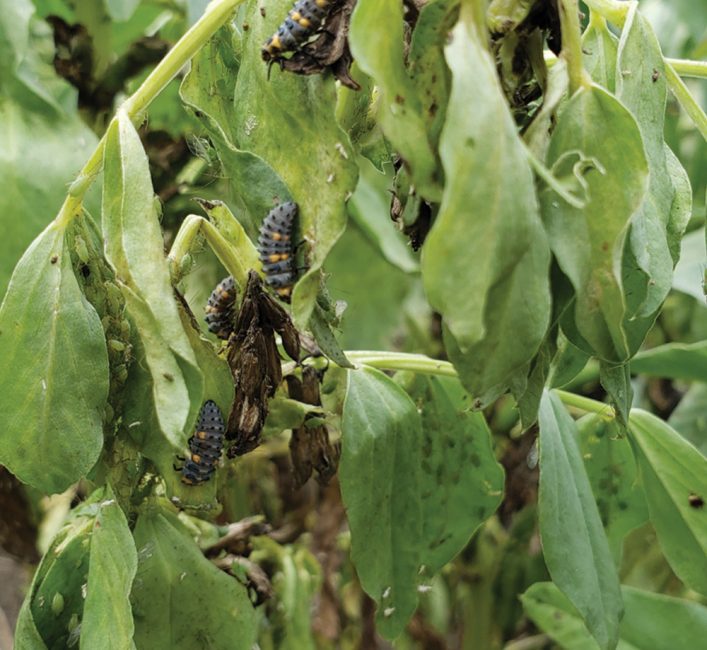
“When they’re all female and they’re all giving birth to live young, they don’t get wings,” Wist adds. “They just sit there and keep feeding and have live young that don’t have wings. The populations can build up very fast because they’re all female and they’re all born pregnant, and within seven to eight days of being born that female who is pregnant starts having her own offspring. When plants start to (age), the aphids pick up on that and start producing offspring that develop wings when they reach their adult stage.”
Several factors determine threat level
How much of a threat aphids pose depends on a number of different factors including where you are, when you harvest and what kind of weather you receive, according to Wist.
For example, pea aphids are a perennial problem in many parts of Saskatchewan and Manitoba but are often an afterthought in Alberta. Wist says that may be because farmers in Alberta can often get their seed in the ground by early May and harvest that crop before pea aphid numbers really start to spike in late July or early August.
Precipitation levels can have a huge effect on pea aphid populations. In wetter years, they are more susceptible to developing fungus, which can significantly increase mortality levels.
Temperature also plays an enormous role in determining how much of a threat pea aphids pose. They tend to thrive when the average daytime high is around 20 or 21 C but have a tough time handling extreme heat. Wist says that could partly explain why aphids didn’t pose much of a threat last summer when the Prairies were in the grip of a heat wave.
“It was too hot in July for the pea aphid populations to really thrive because it was above their thermal tolerance levels. They couldn’t take the heat,” he says.
Wist stresses it’s far too soon to say what kind of a problem pea aphids could pose for farmers in the Prairies this season. If they’re going to blow in from elsewhere, then it will depend largely on weather and wind patterns, Wist says, who is part of a project studying wind patterns and their influence on aphid populations. Overwintering pea aphid populations in regions with extremely cold temperatures and heavy snowfall likely weren’t negatively affected this past winter due to the insulation provided by the snow.
What you can do
Wist’s advice to pulse growers is to start scouting for pea aphids beginning in early July and to use a sweep net as part of their efforts to determine if economic thresholds for the pest have been reached in their fields. He also recommends pulse growers try to cultivate beneficial insects such as lady beetles in their fields by leaving select areas near their fields to grow naturally.
“I’ve had growers share stories with me where lady beetles moved in and basically wiped out the pea aphid population,” he says.
Another effective mitigation strategy for growers is to avoid planting pulses late, which can put those crops into a more susceptible stage when pea aphid populations spike.
“Get your seed in the ground in good time and try to race against time to beat those pea aphid populations,” he says.
Even if pea aphids may not appear to be a problem early on, Wist says it’s critical for growers not to become complacent.
“I think the biggest thing they can do is watch the timing of their crop and if the crop is at a susceptible stage and they can see they have strong pea aphid pressure then use those economic thresholds they have and spray if they need to.”


